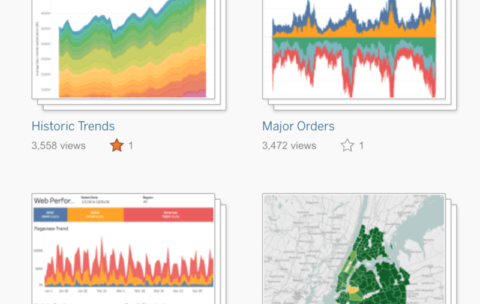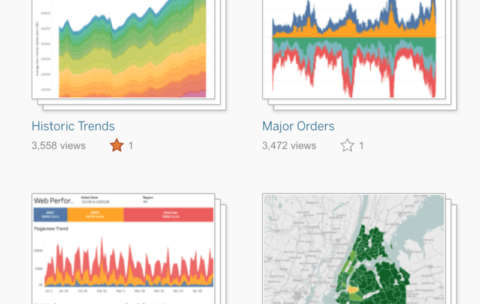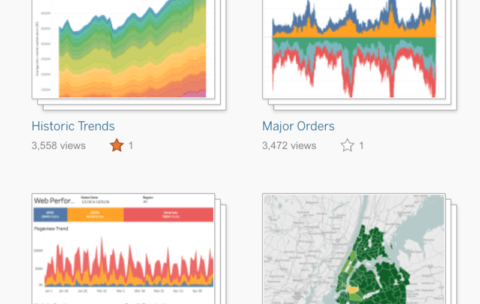All Analytics & BI Courses
Filter by Topic
Filter by Vendor
Splunk Boot Camp
Course Description Learn how to use Splunk for monitoring, searching, …
What you'll learn
Splunk essentials
Indexing in Splunk
Splunk architecture and components
Query and search your data
How to create dashboards and visualizations
How to apply alerts
Working with Apache Kafka
Course Description Learn to use Kafka as your real-time data …
What you'll learn
Overview of Streaming technologies
Kafka concepts and architecture
Programming using Kafka API
Kafka Streams
Monitoring Kafka
Tuning/Troubleshooting Kafka
Introduction to Apache Spark Essentials (TTSK7502)
Course Description Learn the essentials of using Spark for your …
What you'll learn
The essentials of Spark architecture and applications
How to execute Spark Programs
How to create and manipulate both RDDs (Resilient Distributed Datasets) and UDFs (Unified Data Frames)
How Spark core components come together for complete applications
Big Data Fundamentals
Learn the benefits of big data and the underlying technologies, …
What you'll learn
Navigate the technology stacks and tools used to work with big data
Establish a common vocabulary on your teams for applying big data practices
Get an overview of how big data technologies work: Apache Hadoop, Spark, Pig, Hive, Sqoop, OOZIE, and FLUME
Design both functional and non-functional requirements for working with big data
Understand common business cases for big data
Differentiate between hype and what’s truly possible
Look at examples of real-world big data use cases
Select initiatives and projects that have high potential to benefit from big data applications
Understand what type of staffing, technical skills, and training is required for projects that incorporate or focus on big data
Analyze and Visualize Data using Tableau
Course Description: The Analyze and Visualize Data using Tableau Certification …
What you'll learn
Basics about Tableau
How to connect, organize and slice data using Tableau
How to use multiple measures in a view
How learners can successfully show the relationship between various numerical values
How to map and customize data
How to view specific data
How to use quick table calculations to analyze the data in Tableau
How to use basic and advanced calculations in Tableau
How to extract data
What Tableau geocoding is
How to create using parameters
How to make dashboards and stories
Using Tableau to generate statistics
Using Tableau for forecasting
How to compare measures
How to assess the quality of data
How to use Tableau to perform exploratory analysis
Best practices while using Tableau
How to design visualizations for presentations
PL-900T00: Microsoft Power Platform Fundamentals
Course Description: Learn the business value and product capabilities of …
What you'll learn
Describe Microsoft Power Platform components
Describe Microsoft Dataverse, Connectors and AI builder
Describe cross-cloud scenarios across M365, Dynamics 365, Microsoft Azure and 3rd party services
Identify benefits and capabilities of Microsoft Power Platform
Identify the basic functionality and business value Microsoft Power Platform components
Implement simple solutions with Power Apps, Power Automate, Power BI, and Power Virtual Agents
Identify when to use each Microsoft Power Platform component application to create business solution
Learn the value of using Microsoft Power Platform to create business solutions
Learn the components and features of Microsoft Power Platform
Descibe the difference between Dataverse and Common Data Model
Explain use cases and limitations of business rules and process flows
Explain what environments, tables, columns, and relationships are in Dataverse
Learn how other organizations digitize their processes using Power Apps
See Power Apps in action and learn options for making your first app
Learn about what Power Apps is and its business value
See how Power Automate works and looks from the user’s perspective
Build a simple flow
Learn the business value and features of Power Automate
See how Power BI works and looks from the user’s perspective
Learn how to build a simple Power BI dashboard
Describe the business value and features of Power BI
Describe the business value and features of Power Virtual Agents
Build a basic chatbot
Learn essential components that make up Power Virtual Agents and chatbots
55049-A: PowerPivot, Power View and SharePoint 2013 Business Intelligence Center for Analysts
Course Description: This two-day instructor-led course concentrates on PowerPivot and …
What you'll learn
Successfully log into their virtual machine.
Use PowerPivot 2013 in Excel.
Work with DAX.
Create Power View visualizations.
Understand data models.
Save to SharePoint.
Surface on SharePoint.
Work with the SharePoint Business Intelligence Center.
Create dedicated apps in SharePoint for PowerPivot and Power View.
Use PowerPivot within Excel to import a table from SQL Server.
Use PowerPivot within Excel to import a table from SQL Server Analysis Services.
Hide columns they don’t want reflected in the resulting PivotTable.
View the relationships existing within the imported tables from SQL Server and then import an additional table and configure a relationship between it and the existing.
Create a PivotTable within an existing worksheet.
Navigate and successfully use Power View.
Create a table.
Create a chart.
Save and share their work.
Create a BI semantic model.
Explore the options and settings available within the new SharePoint 2013 Central Administration and Excel Services.
Access and review the Secure Store.
Create a new web application and business intelligence site while exploring the features of both.
Create custom apps to store visualizations and/or workbooks in SharePoint 2013 Business Intelligence Center.
55164-A: Quick Powerful Graphics with Power View, PowerPivot, Power Query, Power Map and Power BI
Course Description: This is a 2-days course designed to teach …
What you'll learn
Navigate the Power View interface.
Utilize Power View reports.
Work with tables.
Understand aggregations.
Utilize matrix.
Configure drill through.
Use cards as a visualization.
Apply filters.
Create charts.
Utilize tiles.
Add slicers to reports.
Utilize themes.
Navigate the PowerPivot interface.
Examine and configure relationships.
Configure calculated columns are calculated fields.
Create PivotTables.
Understand and utilize DAX.
Work with hierarchies.
Manage perspectives.
Navigate the Power Query interface.
Merge datasets.
Manage modifications.
Perform data cleaning.
Navigate the Power Map interface.
Use Bing maps.
Examine map data.
Configure tours, scenes, and layers.
Add time to a presentation.
Navigate the Power BI interface.
Utilize data sources.
Understand querying with natural language.
Successfully log into their virtual machine.
Have a full understanding of what the course intends to cover.
- 1
- 2



















